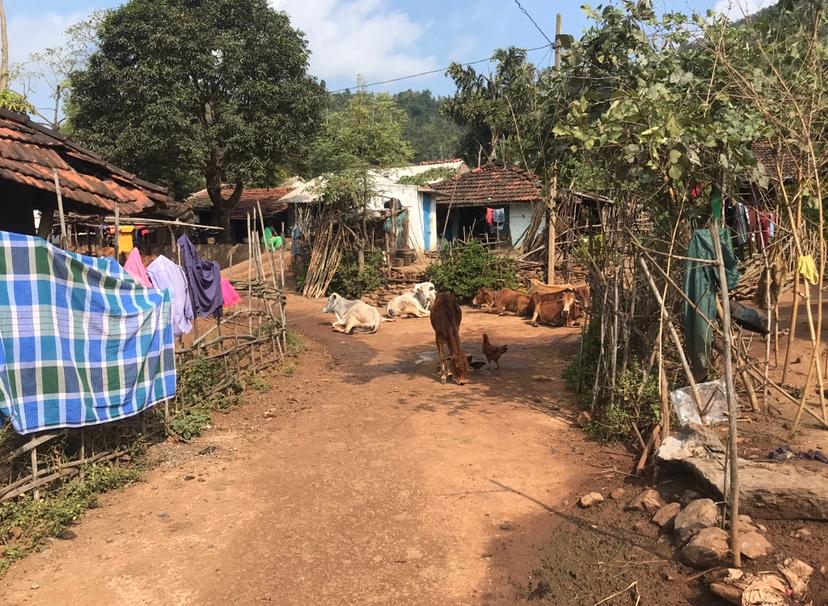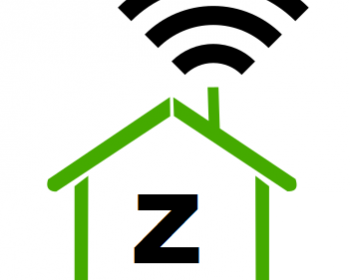By Arianna Cortesi, Claudia Magnani, Roberto Romero, Paula C.P. Silva, Sueli Maxakali, Isael Maxakali, Ana Maria R. Gomes
OtherSkies, an OAD/IAU-funded project, tackles these questions by collecting native narratives, chants, and myths about the sky that have never been written down and recorded before, in collaboration with researchers of the Indigenous Village Aldeia Verde in Brazil. Soon after the project started, all Universities and the majority of services in Brazil shut down due to the rapid diffusion of the pandemic to all the federal states. To protect the indigenous people, the federal government declared the lockdown of the communities. Even so, the first cases of COVID-19 appeared in many indigenous areas of the country, some of which, due to the absence of internet and phone connection, faced severe isolation. Aldeia Nova is one of the indigenous villages of the Maxakali people that suffered this destiny. To overcome the difficulties of communications, the International Astronomical Union (IAU)-funded project “Other Skies” was modified to grant internet connection to the village, support the independent recording and production of material on indigenous astronomy, and start a virtual gallery for sharing astronomical Maxakali knowledge and their perspective of the world.
Under Other Skies: Dialogues of Different Cosmological Paradigms
The project “Under other skies” focuses on ethno-astronomy, particularly the astronomical knowledge of the Maxakali people, an indigenous population of Brazil. The Tikmũ’ũn people, better known as Maxakali, live in one of the smallest indigenous lands in the State of Minas Gerais, Southeast Brazil, which has been completely devastated by the late colonization of the area. Despite the loss of their territory and the increasing contact with the National Society, the richness of the symbolic and ritual dimensions of their world has attracted great ethnographic interest in the last century. A deep look at the Maxakali experience in everyday life, such as in ritual sphere, immediately shows us the complexity of the Maxakali sociality and cosmology. All their knowledge and practices are made by performing shamanic rituals through which they interact with non-human agencies (the yãmiyxop spirits) that inhabit their territory, sharing feasts, chants, food, and other many practices with them. From the Maxakali perspective, we can see that there are no clear boundaries between knowledge and practice, between the ancient past and the present, or between everyday life and ritual life. Everything in their experience, even astronomical knowledge, is inserted in a space-time continuum, which is activated by the constant power of memory and through the relationship with the multiple non-human subjectivities that inhabit it.
The idea of a dialog between scientific and indigenous knowledge about the sky was born from an encounter between one of the astronomers and two indigenous researchers and sciamans (leaders) of the community. The project will be conducted in Aldeia Nova, a Maxakali Village in Minas Gerais, and involves indigenous researchers, shamans, and elders of the village collaborating with anthropologists and educators of the Federal University of Minas Gerais, and astronomers and educators of the University of São Paulo and Rio de Janeiro. The main objective is to collect and translate native narratives, chants and myths about the sky narrated by some of the elders that have never been written down and recorded before.
IAU Office of Astronomy for Development
The project was funded by the Office of Astronomy for Development, a joint project of the International Astronomical Union (IAU) and the South African National Research Foundation (NRF) with the support of the Department of Science and Innovation (DSI). Its mission is to use astronomy to make the world a better place, reminding us that we earthlings live in a pale blue dot orbiting one of the millions of billions of stars of this amazing and expanding universe. Every year, the OAD funds several astronomy-related projects that promote sustainable development through astronomy.
The Potential Risk we Could not Imagine
One of the questions of the OAD selection form is “Describe potential risks and how you will address these?” The words we wrote to answer this question describe several obstacles, without one mention of a world pandemic. The Other Sky project was based on the idea of a dialogue, developed in workshops, meetings, encounters at the margins, that eventually never took place; neither seemed plausible in the nearest future. Yet, we couldn’t give up! So we decided to restructure the entire project. To face this situation we altered the project schedule and budget, including the acquisition of an internet radio connection for Aldeia Nova, purchases of of computers and material to record and produce films and audio in the Aldeia. We also planned to create a virtual gallery, following the example of the exhibition Mundos Indigenas at Espaço do Conhecimento of the Federal University of Minas Gerais, in Belo Horizonte. These encounters left space for independence, and the audience became global.
The Virtual Gallery and the Space of Knowledge
The “Espaço do Conhecimento” (Space of knowledge) of UFMG launched the exhibition Mundos Indígenas in December 2019, where the public was presented with ways of living, knowing, and taking care from Maxakali, Pataxoop, Xakriabá, Yanomami and Ye’kwana peoples. It showed that “the history of Brazilian indigenous people is not only one.” With the closure of museums in late March due to the COVID-19 pandemic, visits to the exhibition were suspended. The exhibition schedule was extended until July 2021, which expanded the possibility of visitation, after the reopening of the museums will be authorized. Meanwhile, Espaço do Conhecimento UFMG prepared a series of new videos to provide the public with the experience of a virtual visit to the exhibition through YouTube videos, launched on September 21. The six videos of the Virtual Visit to the Mundos Indígenas Exhibition are available to the public on the Espaço do Conhecimento UFMG channel on YouTube, alongside messages from indigenous curators and a video on the teheys of Dona Liça Pataxoop.
A Virtual Re-birth
The project Other Skies, supported and inspired by the virtual exhibition Mundos Indígenas, will also create a virtual gallery to present Maxakali astronomy. The gallery will also include images taken from the Southern Photometric Local universe Survey collaboration (S-PLUS), a Spanish-Brazilian collaboration, to map the southern sky in twelve colours. The virtual exhibition will exemplify the heterogeneity of astronomical knowledge. Through an intercultural approach, it will promote an understanding of the different astronomical paradigms, and push back against a superficial approach to science and social biodiversity. An example is the story Star Women, already available in the exhibition Mundos Indigenous. Although COVID-19 marginalized even more Indigenous communities, it created the grounding for the diffusion of their knowledge worldwide. One day we will grab our telescopes and travel up north to the silent dark skies of the Aldeia Nova, to look with different eyes at the same infinite spaces.
About the authors
Arianna Cortesi holds a PhD in astronomy and is currently a post-doc at the Observatory of Valongo in Rio de de Janeiro, Brazil. In the last several years, she has been part of several outreach projects that combine art, music, and astronomy.
Claudia Magnani holds a degree in Anthropology of the University of Bologna, Italy, and a PhD in Education from the Federal University of Minas Gerais, Brazil. Currently she is a high school literature teacher and an independent researcher of Amerindian ethnography, gender studies, and female shamanism. She has been studying Maxakali traditions and culture since 2014.
Roberto Romero is an ethnologist. He obtained a PhD in Social Anthropology at the National Museum and is part of the Núcleo de Antropologia Simétrica, Brazil. He has researched the Tikmũ’ũn (Maxakali) population since 2011. He is part of the association Filmes de Quintal and he is one of the organizers of forumdoc.bh, a festival of documentaries and ethnic movies of de Belo Horizonte. He served as Assistant Director of the lungometraggio ‘Yãmĩyhex: as mulheres-espírito’ (Sueli e Isael Maxakali, 2019).
Paula C. P. Silva is a designer and doctoral student in Education at the Federal University of Minas Gerais, Brazil. She has been developing ethno-design works and research among the Tikmũ’ũn since 2015. She is part of the Maxakali research group “Humm Yĩkopit (Asking the Earth),” of the Água Boa Territory, and of the “Study and Research Group on Indigenous Intercultural School Education” (GEPEEI). She has experience in graphic design projects in the areas of corporate internal communication, visual identity, and indigenous editorials.
Sueli Maxakali is a filmmaker, photographer and artist. A strong tikmũ’ũn leader, she made the films When the yãmiy come to dance (2011), Kõnã’ãg xeka: Dilúvio Maxakali (Pajé Filmes, 2016) and Yãmiyhex: women-spirit. She has participated in important film festivals throughout Brazil, such as Forumdoc.bh, Tiradentes Cinema Exhibition, Olhar de Cinema and Cine Kurumin, presenting and commenting on tikmũ’ũn audiovisual productions. Together with other women in her village, she produced a book of photographs, entitled koxukxop. Sueli is also an indigenous teacher and researcher, teaching, singing, and translating songs and stories of the yãmĩyxop.
Isael Maxakali is a filmmaker and visual artist. He holds a BA in Indigenous studies from the Federal University of Minas Gerais, Brazil. In his films, he reveals aspects of the traditional culture of the Maxakali—their stories, songs, ceremonies and rituals, as well as the choices that these people have been making to live in a modern world. Isael works with his wife and filmmaker Sueli Maxakali. Together, with the help of the elders and shamans in their village, they record many aspects of their culture and help preserve and disseminate the values of the Maxakali way of life.
Ana Maria R. Gomes received her PhD in Education at University of Bologna, Italy. She was a post-doc at the National Museum of Rio de Janeiro, Brazil, and at the University of St. Andrews, Scotland. Currently, she is Professor at the Faculty of Education, Universidade Federal de Minas Gerais, Brazil, in the PhD program Education Program for Knowledge and Social Inclusion. She is also the coordinator of the Intercultural Training Course for Indigenous Educators from 2008 to 2011 and currently part of the teaching team on Socio-Environmental Knowledge (Social Sciences). She researches cultural practices and learning in different socio-cultural contexts, ethnography, cosmopolitics, and sustainability.









